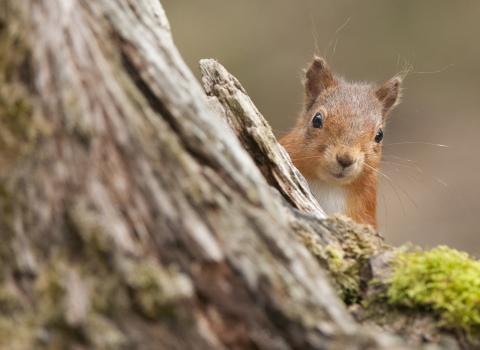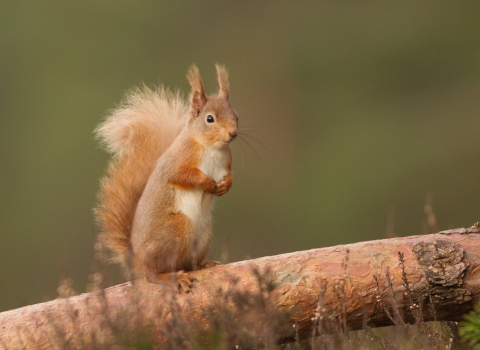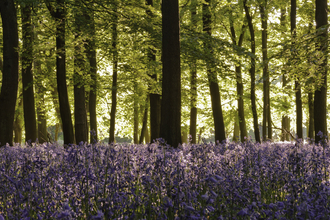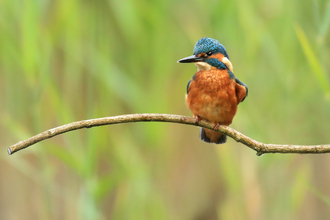Red squirrels
The only native squirrel to the UK, with their distinctive russet fur, tufted ears, and twitching tail, a red squirrel is a captivating sight. Autumn is a great time to see them as they forage nuts to cache for the long winter months.
The introduction of the grey squirrel from North America caused our once common native red squirrel to go on the retreat, disappearing from great swathes of the country. The total UK population is now thought to be approx. 287,000 individuals, of which more than three-quarters are found in Scotland.
The plight of red squirrels
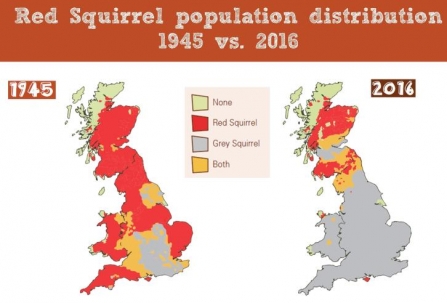
The Eurasian red squirrel (Sciurus vulgaris) is our only native species of squirrel, but it is under threat, having nearly completely disappeared from most of the UK in just under 150 years: declining from around 3.5 million to just 280,000.
In 2020 the Mammal Society released an official Red List for British Mammals, highlighting the species most at risk. In Britain 1 in 4 species are threatened with extinction and the red squirrel is classified as ‘Endangered’ and is one of the 21 species considered at risk of extinction.
Lancashire Wildlife Trust is working hard to ensure this doesn’t happen in Merseyside and Lancashire. Thanks to the perseverance and dedication of our volunteers, local community, and Project Officers, the Lancashire and Merseyside population is still going strong.
It is our aim that red squirrels will once again become a common sight throughout North Merseyside, West Lancashire and beyond.
Red Squirrel Action Plan
In 2023 the England red squirrel action plan was published. The aims of the plan is to:
- Protect, identify and strengthen red squirrel populations across the current range.
- Expand the current range of red squirrels
- Support and improve collaboration actions at all levels
- Promote better understanding and support for red squirrel conservation across England.
Why do we love this species so much?
For many of us the red squirrel brings back childhood memories of Squirrel Nutkin, a character from the famous Beatrix Potter series. The red squirrel is one of our most iconic, native and much-loved small mammals, and seeing one for the first time is a special moment that everybody should experience.
In terms of ecological niche, the red squirrel is a key seed disperser for our native tree species such as Scots pine (Pinus sylvestris). They also spread mychorrizal fungi spores that are incredibly important for their symbiosis with trees. Red squirrels therefore play a vital role in the regeneration of coniferous woodlands which are also an important habitat for other species like the goshawk, pine marten and wildcat.
What are the threats to red squirrels?
The main threat to the species has been the introduction of the invasive grey squirrel (Sciurus carolinensis), brought over from North America by the Victorians in the 1870s.
Not only do grey squirrels outcompete reds for food and resources, but they also carry the squirrel pox virus. This virus is fatal to reds, yet is carried by greys without any impact on their health. Recent studies have shown that up to 100% of grey squirrels in an area can be carrying the virus. Where the virus is present, greys replace red squirrels up to 20 times faster than through competition alone.
Unfortunately, red squirrels face numerous other threats such as predation by domestic cats and dogs, roadkill, habitat fragmentation and loss.
Red squirrels and their resting places receive full protection in the UK under the Wildlife & Countryside Act 1981. Grey squirrels are listed on Schedule 9 of this Act, which makes it illegal to release a grey squirrel or allow it to escape.
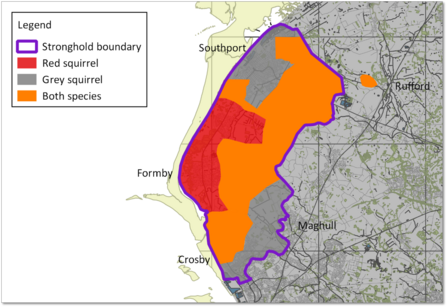
Red squirrel distribution in West Lancashire and North Merseyside
Monitoring
We carry out standardised monitoring of red and grey squirrels throughout North Merseyside and West Lancashire every spring and autumn and have been doing so since 2002. This has enabled us to track the changes in the red squirrel population throughout the two squirrel pox outbreaks, and also means we can monitor overwinter survival and breeding success.
Every spring and autumn we carry out standardised monitoring throughout North Merseyside and West Lancashire, thanks to local landowners allowing our project officers and volunteers to access sites in the area. This monitoring has been ongoing since 2002 and has enabled us to track the changes in red squirrel population throughout the squirrel pox outbreaks, along with their overwinter survival and breeding success.
This monitoring also feeds into the Red Squirrels Northern England Spring Monitoring Programme, which is a collaborative survey of over 200 woodlands and gardens across the North of England.
Research
North Merseyside is home to one of the few urban red squirrel populations in England. We have been involved in some exciting research.
Between 2016 and 2020 we were a partner in the Red Squirrels united project: The biggest ever coalition of academics and delivery partners working together on a scientifically robust programme of conservation for our iconic red squirrels.
We have:
- Researched how red squirrels utilise the urban environment with Kat Fingland at Nottingham Trent University.
- Trained the first red squirrel conservation detection dog in the country with Kyrus Ltd. Max is helping us to find sick and dead red squirrels so we can react more quickly to disease outbreaks. You can see him in action in the video below, and click here to read more about one of his finds in Bangor.
- Helped Sanger Institute's work to sequence the genomes of 25 British mammals
We are now:
- Working with Northumberland Wildlife Trust, Cumbria Wildlife Trust, Knowsley Safari, and Southern Scotland to create the “Red Squirrel Recovery Network”, a landscape scale partnership to help protect red squirrels across north England and Southern Scotland. Read more about it here.
- Researching the wider impacts of grey squirrels. Our Red Squirrel Officer, Molly Frost, is currently undertaking her PhD at the University of York. Her research is in collaboration with UK Squirrel Accord, Botstiber Institute for Wildlife Fertility Control, Forestry Commission, and Centre for Ecology and Hydrology. Invasive species pose a great threat to native environments, the aim of the project is to assess the biodiversity and ecosystem service impacts of grey squirrels in UK woodland habitat, You can follow Molly’s research here.
Grey squirrel management
We work with landowners and volunteers throughout North Merseyside and West Lancashire to reduce the threats from grey squirrels in both woodlands and urban areas.
If you would like to sign up to our Urban Trap Loan Scheme click here.
For any more information about grey squirrel management email red.squirrel@lancswt.org.uk
Search for red squirrel volunteering opportunities
Save the red squirrel (https://www.youtube.com/watch?v=tVn_OlYyig4)
(c) The Wildlife Trusts
Where can I see them?
In England, red squirrels can be seen on the Isle of Wight, Brownsea Island (where there are no grey squirrels) and in Northumberland, Cumbria, North Yorkshire and nearby on the Formby coast. They have been seen in two of our own reserves, Freshfield Dune Heath and Mere Sands Wood. The main strongholds for red squirrels are in Scotland and Ireland due to the introduction of grey squirrels from North America which caused our native red squirrel numbers to plummet due to the competition from the larger American grey squirrels, but also due to the squirrel pox virus carried by the greys. This can cause entire populations of red squirrels to die out.
What to look for
Red Squirrels can be found in coniferous and broadleaf woodlands, feasting on hazelnuts by cracking the shell in half. You may also find pine cones that have been nibbled, leaving what looks like an apple core behind. Squirrels make a rough nest, called a drey, of twigs, leaves and strips of bark in the fork of a branch, high in the tree canopy. Like most wild animals, red squirrels tend to be shy of people, so keep as quiet as you can. Its best to look up, red squirrels are arboreal (meaning they live in trees). They are easier to spot in morning or late afternoon, but always listen out for rustling in the trees or falling pinecones as you may spot a squirrel making the noise.
Report your squirrel sightings
Please report sightings of both red and grey squirrels. This will help us to accurately map the distribution of both species throughout the project area.
The easiest way to report red squirrel sightings is by completing this form.
If you spot a sick red squirrel, please phone 07590 745862.
How you can help red squirrels
You can help red squirrels in Lancashire and Merseyside by becoming a volunteer.
Find volunteering opportunities
If you're lucky enough to have red squirrels visiting your garden, we recommend scatter feeding over using feeders this minimises the risk of squirrel pox and any other diseases spreading. If you have bird feeders and water bowls please clean them regularly. Also make sure you provide a variety of foods such as monkey nuts, hazelnuts, sunflower seeds, apple, carrot and lots of fresh water.
Remember, feeding should only be supplementary. To ensure that red squirrels still forage naturally, only provide food every few days.

